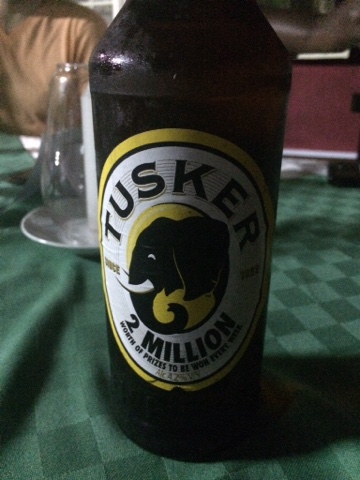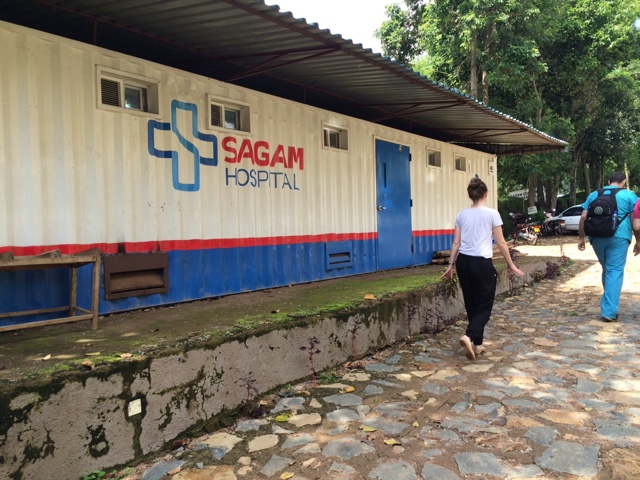A year and a half after my last trip to Africa, I am back. My trip to Ethiopia with Auna was a much needed reprieve from the frustrations and pace of American medicine. It felt like a reset. I left Ethiopia with a new found confidence in my ability to practice medicine independently and an appreciation both for the conveniences of life at home as well as the simplicity of a life without constant electronic stimulation, where there was ample time to enjoy the outdoors, exercise, sleep, and read. Here's hoping for similar results from this trip.
As before, I connected through Dubai but only had a 4 hour layover in the airport, enough time to grab a Coke Light and a quick nap under the desert sun pouring in through the windows. I arrived in Nairoi around 8 PM local time, stayed overnight in a small apartment owned by the MGH program to house visitors connecting through Nairobi, and left for Kisumu early the next morning. It was still dark when I went to the airport and the driver, Jeffrey, pulled up to a checkpoint to enter the airport grounds where we were met with a traffic jam. Many people were getting out of their cars and walking to a sidewalk on the right had side of the road. I didn't understand what was happening at first. Then Jeffrey said, "When we get closer to the gate, you get out and walk with those people to the small building there and go through security. You don't need to take anything." I thought he was joking at first. I have no idea what the purpose of this exercise is -- from what I can tell, passengers disembark and walk through a metal detector housed in a building off to the side while the drivers stop at the security checkpoint and the cars are searched. Then all the passengers wait on the other side of the checkpoint to get back in the car. Given that you have to go through security twice more before actually boarding a flight in the airport, this seems like a meaningless exercise. Despite the delay, I made it to my gate on time for my Kisumu flight. I even had a chance to use 15 min of free internet in the airport -- long enough to find out that oral board scores were posted and that I passed! That was a relief.
My flight landed in Kisumu just a bit after sunrise and I exited the plane, walked across the Tarmac in the cool morning air to the terminal to collect my bag and find Jeffrey, one of the post-undergrad research coordinators here. I spent the morning in Kisumu with Jeffrey and Fred, our driver, whose birthday happened to be the same day. Jeffrey and I had breakfast at Java House (good food, coffee, and reliable wifi; Jeffrey also bought Fred a piece of cake while we were at the cafe), went grocery shopping at the Nakumatt (impressively well stocked), and then returned to the airport to pick up a pharmacy resident who is also visiting the hospital for a couple of weeks. We then set out for Sagam where the hospital is located, about a 45 minute drive from Kisumu. Thankfully, this drive was significantly less eventful than our cow-dodging trek in Ethiopia. Fred entertained us with his eclectic collection of music, ranging from Dolly Parton to R Kelly. It is the rainy season here, so the countryside along the drive was lush and verdant, dotted with banana trees, hibiscus, and bougainvillea with purple mountains visible in the distance. The road we traveled was apparently once partially unpaved, but was finished recently in preparation for President Obama's visit to Kenya. His family is from Western Kenya near Sagam and there was a possibility that he would travel to this area to see them -- thus, the push to finish the road (the President ended up just staying in Nairobi, however).
Once we made it to Sagam, we dropped our bags off at the house where I am staying during my visit. I am living with six other people at the moment, although this number will fluctuate during my month here. Currently, there are two Global Health fellows (my friend Aparna and Priyanka, a family medicine doctor), a pharmacy resident (Steven) and three research coordinators (Molly, Lance, Jeffrey -- they are all med school bound in the fall). Just before Steven and I arrived, the group had partially moved into a new house. Both houses are located on the same property, the new space is just up a small grassy hill from the original house, but we are splitting our activities between the two because of some finishing touches (hot water, window screens, etc) missing in the new house. Essentially, we only sleep in the new house and socialize, shower (if you prefer warm water), watch movies, and cook meals in the old house.
The property on which the houses are situated is secluded and peaceful. It is about a 15-20 minute walk down rocky dirt roads from the hospital to the property, which is tucked back away from the road and surrounded by tall shade trees. The grounds are well kept with garden beds at the bases of the trees, pink roses blooming in the yard, and monkeys, chickens, and one small tri-colored dog roaming the area. The new house is two stories and is spacious -- with 10 bedrooms, 4 bathrooms, a kitchen, and two living areas (one upstairs and one downstairs). The old house is a single story bungalow with a long front porch that is truly multipurpose -- there are table and chairs where we sometimes eat, play games, or just hang out and relax; a hammock, which is the best reading nook; work out equipment consisting of two yoga mats, an exercise ball, and two sets of hand weights; and a diverse, plentiful collection of footwear ranging from mud boots to running shoes to flip flops. In fact, about a fifth of the porch serves as the shoe holding area. The inside of the old house has a small kitchen with a stocked pantry, a projector for watching movies, two old comfortable couches, and most importantly flushing toilets and hot water.
Jeffrey took us on a tour of the hospital next. Sagam Community Hospital is much bigger than I expected. It consists of a clinic/OPD building, a female ward, male ward, pediatric ward, maternity ward, a new ward with private rooms (mostly empty the majority of the time), radiology department, pharmacy, operating room, and a large ER that has a separate section for pediatrics (3 beds) and a high dependency unit (basically the ICU equivalent), a library where the fellows/coordinators work during the day, "the container" which is a trailer that serves as a meeting space, and the canteen. We ended our tour in the canteen where we met the rest of the group while they were lunching. The canteen is also a tiny trailer-like structure with white plastic tables and chairs, an abundance of flies, ice cold orange Fanta and water in the fridge, and menus scattered about with a food list that vaguely resembles what is actually available. But the food is so good! You order at the window/Dutch door to the kitchen, then write your order in a notebook under your name so you can pay later. Lunches here take about an hour to finish, the food is far from fast, but it is refreshing to take the time to sit and relax after the morning of work. My favorite foods so far are chapati (a flat bread similar to naan), a dish we call "Rolex" (although I'm pretty sure it is actually "roll egg") which is fried egg rolled up in chapati. Other popular dishes are warm cabbage salad, sukuma (kale/collard green-like veggie), beef stew, and mandazi (Kenyan version of doughnuts). The Kenyan favorite is ugali, which is basically a bland dense cornmeal paste brick.
After a week, I am now settled into the routine of life in Sagam...stay tuned!
View of the hospital
A visitor outside the kitchen window
Roads between the house and hospital
The new house and the yard




















































